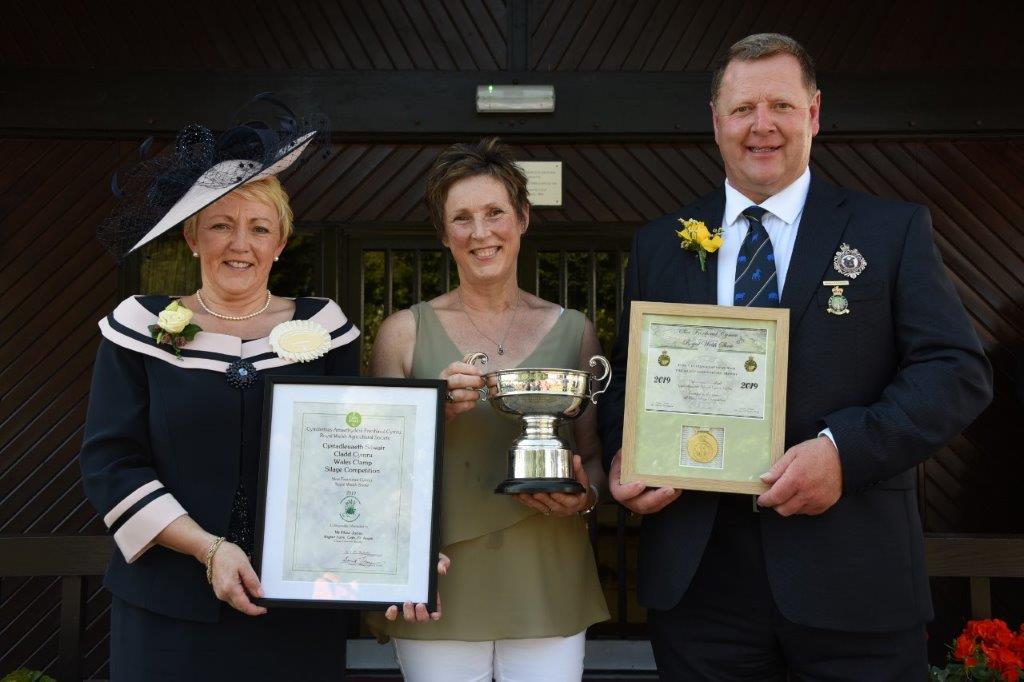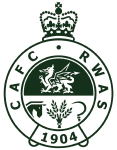
The 2019 all Wales clamp and big bale silage competitions run by the Royal Welsh Agricultural Society and the Federation of Welsh Grassland Societies, has again seen some top quality silage produced by many of the best silage growers from across Wales.
Silage is key to the production of meat and milk on many Welsh farms, and the competition is one of the most contested in the industry.
All Wales Clamp Silage Competition
The winner of the clamp competition, sponsored by Wynnstay Group PLC and supported by Agri Lloyd International Ltd, is Huw Jones of Wigfair Farm, Cefn, St Asaph, a member of the newly founded Clwyd Grassland Society.
This competition is open to all members of the 22 Welsh grassland societies. Five regional finalists then go through to the All Wales final which this year was judged by technical judge, John Evans, industry sponsor, Iwan Vaughan and the 2018 winner Chris Edwards of R D Edwards, Cowbridge.
The Judging Panel agreed that Wigfair Farm as a whole package, is well managed within a very tidy system. Whilst the analyses on the quality of the silage (tested by Agri-Lloyd) is important, the judges also visit each farm to assess clamp management and feeding practices amongst other efficiency markers.
Wigfair Farm runs to 302 acres with 235 acres in grass and 67acres of Maize. The business milks 300 cows producing 9587l/cow (4.06% Butterfat 3.31% Protein). There are 70 followers and 55 under 12months. 200 ewes and 150 lambs are wintered at Wigfair. The silage analysed at DM 27.9%, D-value 76.7%, ME12.3 MJ/kg and CP 15.9% showing high intake levels and a very well made crop.
The farm is situated in the Vale of Clwyd, sitting 280ft above sea level on a heavy clay soil. Nitrogen usage for the three cuts was 80, 70 and 60 kgN/ha. 155 acres was taken for first cut, 141 for second cut and 119 acres for third cut. Dates were 7th May, 7th June and 27th September. Crop was wilted for 20hrs and the ensiling process completed in a day. Total tonnage ensiled 2349t. The cows are on complete diet fed by a tub mixer wagon.
Runner up, Dai Davies of Gwarffynnon, Silian, Lampeter, is a member of Mid Cardiganshire Grassland Society. Gwarffynnon is a 185 acre farm sitting 750 ft asl with 144 dairy cows, 1 bull, and 63 young stock. They harvest three cuts per year (May, June and September). The foundation of the winter ration analysed at DM 28.4%, D-value 74.8%, ME 12.0 MJ/kg and CP 16%.
Judge John Evans added: “as always, it is not enough to make good silage, it is also important to feed it well. Farmers are increasingly conscious of environmental issues such as slurry storage and utilisation. Increasingly they also consider the effect of what they feed on the environment (methane production). We saw evidence of this all. It was also good to note that the farmers we judged had managed to make enough silage despite the drought we suffered for part of the summer.”
Charlie Morgan, FWGS Secretary said “it is very encouraging to see the quality of home produced forages and the attention to detail farmers demonstrate in order to reduce costs and improve efficiencies across all enterprises the level of performance continues to rise and under more challenging climatic conditions” and expressed his congratulations to all who took part and achieved the high standard necessary for this competition.
The All Wales Clamp Silage competition has been running since 1979.
All Wales Big Bale Competition
The winner of the big bale competition, sponsored by BPI Agriculture (Silotite), is AG & MT Davies, Llys Farm, Ystrad Road, Denbigh, a member of the newly formed Clwyd Grassland Society – and the second farm from that society to win a top RWAS/FWGS Silage Award.
The All Wales Big Bale competition has become very popular since its inception in 1996. It is open to all members of the 22 Welsh grassland societies, and has become a very challenging competition to win. This year’s competition was judged by a panel of three: Dr Dave Davies of Silage Solutions; Mr Stuart Anthony (BPI Agriculture (Silotite)); and last year’s winner, Mr Mark Evans.
Llys Farm impressed the judges by not only focusing on forage quality for their stock, but also by examining the role forage mineral content plays in their livestock nutrition and health. Realising they are in a region of selenium deficiency in their soils and fertilising their grassland with Se enriched fertilisers, an approach alongside others that will be part of the future low input farming practice. They were also focussed on their production cycle with discrete but extended lambing season to increase the window of opportunity for lamb sales over the year. Another factor that will be increasingly important in a post Brexit Britain.
Llysfran is a 300 acre Beef and Sheep unit. Sited 330ft asl on a clay-loam and is South/South East facing. Stock numbers are 20 suckler cows; 850 ewes producing 1500 lambs; and 250 finishing beef animals bought as stores 15-20 months old. They are finished on a ration of Trafford Gold, Fodder Beet and silage during the winter, and have a daily live weight gain of 1.5-2.0 kg.
Lambing is split into 4 periods – December, February, March and ewe lambs in April, in order to supply Easter lamb at premium prices, and a continual supply of quality lambs 38-42kg throughout the grass growing season.
Two cuts of silage were taken and this year, on the 7th June – 60 acres/500 bales; and 30 acres/150 bales in August. The crop was wilted for 48hrs, having been cut late afternoon. Bales are fed on a simple tractor and loader system, and the analysis readings were: DM 54.7%, CP 11.5, D-value 62.4, ME 10, & pH 4.8.
The judges all agreed that the competition was strongly fought as usual. Dave Davies said “This year’s winner and runner up had a higher degree of focus on their baled silage trying to really match the animal’s needs with the silage they were making. However, on this occasion, Llysfran were ahead by a narrow margin”.
The runner-up Award on this occasion goes to E Evans a’i Gwmni, Ty Nant, Talybont, a member of the Aberystwyth Grassland Society and a previous FWGS award winner. Their focus is on forages that can meet the suckler cow’s needs such as whole crop cereal silage, alongside top quality red clover and grass silage for the growing cattle and in lamb ewes.
Tynant, is a 2800 acre hill/mountain farm at 900 ft asl. They stock nearly 70 beef cows along with a similar number of young stock. They harvest three cuts per year (June, July and August). The silage analysis was: DM 41.9%, CP 16.8, D-Value 70.2, ME 11.2, pH 4.6.
